Maximilian Alber
Towards Robust Foundation Models for Digital Pathology
Jul 22, 2025Abstract:Biomedical Foundation Models (FMs) are rapidly transforming AI-enabled healthcare research and entering clinical validation. However, their susceptibility to learning non-biological technical features -- including variations in surgical/endoscopic techniques, laboratory procedures, and scanner hardware -- poses risks for clinical deployment. We present the first systematic investigation of pathology FM robustness to non-biological features. Our work (i) introduces measures to quantify FM robustness, (ii) demonstrates the consequences of limited robustness, and (iii) proposes a framework for FM robustification to mitigate these issues. Specifically, we developed PathoROB, a robustness benchmark with three novel metrics, including the robustness index, and four datasets covering 28 biological classes from 34 medical centers. Our experiments reveal robustness deficits across all 20 evaluated FMs, and substantial robustness differences between them. We found that non-robust FM representations can cause major diagnostic downstream errors and clinical blunders that prevent safe clinical adoption. Using more robust FMs and post-hoc robustification considerably reduced (but did not yet eliminate) the risk of such errors. This work establishes that robustness evaluation is essential for validating pathology FMs before clinical adoption and demonstrates that future FM development must integrate robustness as a core design principle. PathoROB provides a blueprint for assessing robustness across biomedical domains, guiding FM improvement efforts towards more robust, representative, and clinically deployable AI systems that prioritize biological information over technical artifacts.
Atlas: A Novel Pathology Foundation Model by Mayo Clinic, Charité, and Aignostics
Jan 10, 2025Abstract:Recent advances in digital pathology have demonstrated the effectiveness of foundation models across diverse applications. In this report, we present Atlas, a novel vision foundation model based on the RudolfV approach. Our model was trained on a dataset comprising 1.2 million histopathology whole slide images, collected from two medical institutions: Mayo Clinic and Charit\'e - Universt\"atsmedizin Berlin. Comprehensive evaluations show that Atlas achieves state-of-the-art performance across twenty-one public benchmark datasets, even though it is neither the largest model by parameter count nor by training dataset size.
xCG: Explainable Cell Graphs for Survival Prediction in Non-Small Cell Lung Cancer
Nov 12, 2024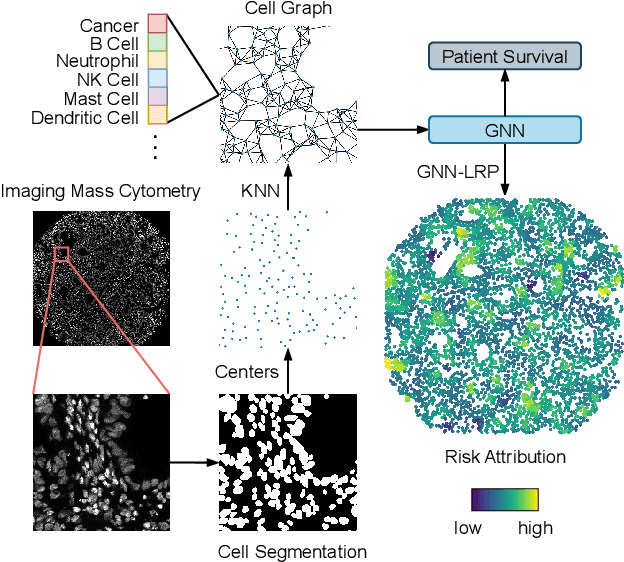

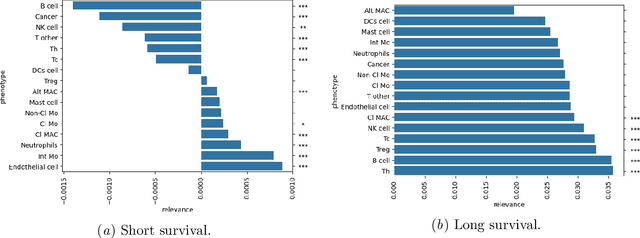
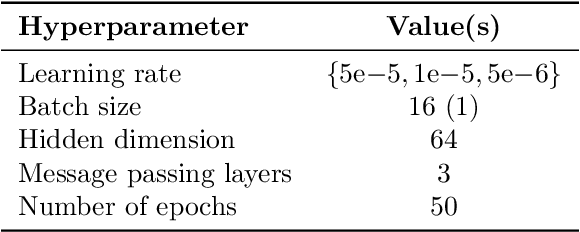
Abstract:Understanding how deep learning models predict oncology patient risk can provide critical insights into disease progression, support clinical decision-making, and pave the way for trustworthy and data-driven precision medicine. Building on recent advances in the spatial modeling of the tumor microenvironment using graph neural networks, we present an explainable cell graph (xCG) approach for survival prediction. We validate our model on a public cohort of imaging mass cytometry (IMC) data for 416 cases of lung adenocarcinoma. We explain survival predictions in terms of known phenotypes on the cell level by computing risk attributions over cell graphs, for which we propose an efficient grid-based layer-wise relevance propagation (LRP) method. Our ablation studies highlight the importance of incorporating the cancer stage and model ensembling to improve the quality of risk estimates. Our xCG method, together with the IMC data, is made publicly available to support further research.
AI-based Anomaly Detection for Clinical-Grade Histopathological Diagnostics
Jun 21, 2024



Abstract:While previous studies have demonstrated the potential of AI to diagnose diseases in imaging data, clinical implementation is still lagging behind. This is partly because AI models require training with large numbers of examples only available for common diseases. In clinical reality, however, only few diseases are common, whereas the majority of diseases are less frequent (long-tail distribution). Current AI models overlook or misclassify these diseases. We propose a deep anomaly detection approach that only requires training data from common diseases to detect also all less frequent diseases. We collected two large real-world datasets of gastrointestinal biopsies, which are prototypical of the problem. Herein, the ten most common findings account for approximately 90% of cases, whereas the remaining 10% contained 56 disease entities, including many cancers. 17 million histological images from 5,423 cases were used for training and evaluation. Without any specific training for the diseases, our best-performing model reliably detected a broad spectrum of infrequent ("anomalous") pathologies with 95.0% (stomach) and 91.0% (colon) AUROC and generalized across scanners and hospitals. By design, the proposed anomaly detection can be expected to detect any pathological alteration in the diagnostic tail of gastrointestinal biopsies, including rare primary or metastatic cancers. This study establishes the first effective clinical application of AI-based anomaly detection in histopathology that can flag anomalous cases, facilitate case prioritization, reduce missed diagnoses and enhance the general safety of AI models, thereby driving AI adoption and automation in routine diagnostics and beyond.
RudolfV: A Foundation Model by Pathologists for Pathologists
Jan 23, 2024



Abstract:Histopathology plays a central role in clinical medicine and biomedical research. While artificial intelligence shows promising results on many pathological tasks, generalization and dealing with rare diseases, where training data is scarce, remains a challenge. Distilling knowledge from unlabeled data into a foundation model before learning from, potentially limited, labeled data provides a viable path to address these challenges. In this work, we extend the state of the art of foundation models for digital pathology whole slide images by semi-automated data curation and incorporating pathologist domain knowledge. Specifically, we combine computational and pathologist domain knowledge (1) to curate a diverse dataset of 103k slides corresponding to 750 million image patches covering data from different fixation, staining, and scanning protocols as well as data from different indications and labs across the EU and US, (2) for grouping semantically similar slides and tissue patches, and (3) to augment the input images during training. We evaluate the resulting model on a set of public and internal benchmarks and show that although our foundation model is trained with an order of magnitude less slides, it performs on par or better than competing models. We expect that scaling our approach to more data and larger models will further increase its performance and capacity to deal with increasingly complex real world tasks in diagnostics and biomedical research.
Leveraging weak complementary labels to improve semantic segmentation of hepatocellular carcinoma and cholangiocarcinoma in H&E-stained slides
Feb 03, 2023



Abstract:In this paper, we present a deep learning segmentation approach to classify and quantify the two most prevalent primary liver cancers - hepatocellular carcinoma and intrahepatic cholangiocarcinoma - from hematoxylin and eosin (H&E) stained whole slide images. While semantic segmentation of medical images typically requires costly pixel-level annotations by domain experts, there often exists additional information which is routinely obtained in clinical diagnostics but rarely utilized for model training. We propose to leverage such weak information from patient diagnoses by deriving complementary labels that indicate to which class a sample cannot belong to. To integrate these labels, we formulate a complementary loss for segmentation. Motivated by the medical application, we demonstrate for general segmentation tasks that including additional patches with solely weak complementary labels during model training can significantly improve the predictive performance and robustness of a model. On the task of diagnostic differentiation between hepatocellular carcinoma and intrahepatic cholangiocarcinoma, we achieve a balanced accuracy of 0.91 (CI 95%: 0.86 - 0.95) at case level for 165 hold-out patients. Furthermore, we also show that leveraging complementary labels improves the robustness of segmentation and increases performance at case level.
Balancing the composition of word embeddings across heterogenous data sets
Jan 14, 2020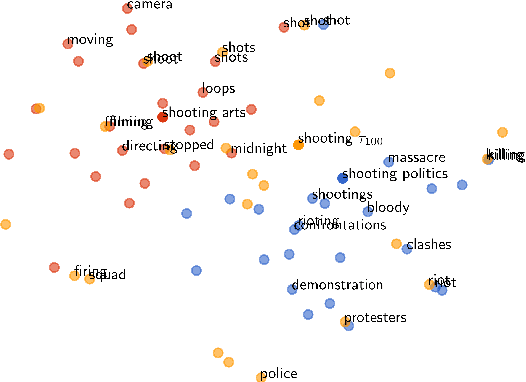
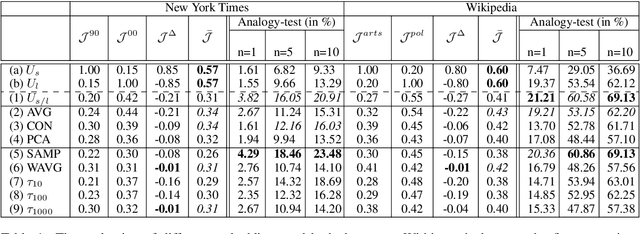
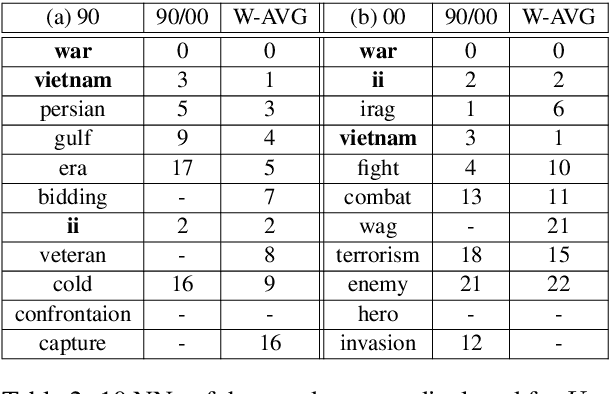
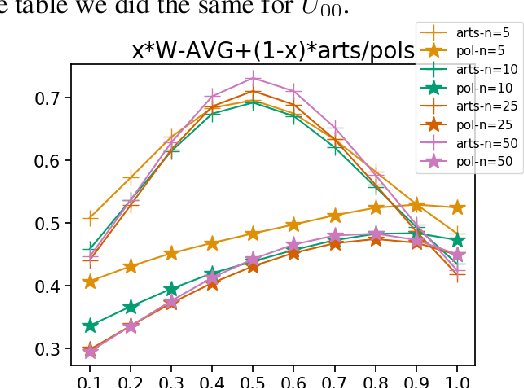
Abstract:Word embeddings capture semantic relationships based on contextual information and are the basis for a wide variety of natural language processing applications. Notably these relationships are solely learned from the data and subsequently the data composition impacts the semantic of embeddings which arguably can lead to biased word vectors. Given qualitatively different data subsets, we aim to align the influence of single subsets on the resulting word vectors, while retaining their quality. In this regard we propose a criteria to measure the shift towards a single data subset and develop approaches to meet both objectives. We find that a weighted average of the two subset embeddings balances the influence of those subsets while word similarity performance decreases. We further propose a promising optimization approach to balance influences and quality of word embeddings.
Explanations can be manipulated and geometry is to blame
Jun 19, 2019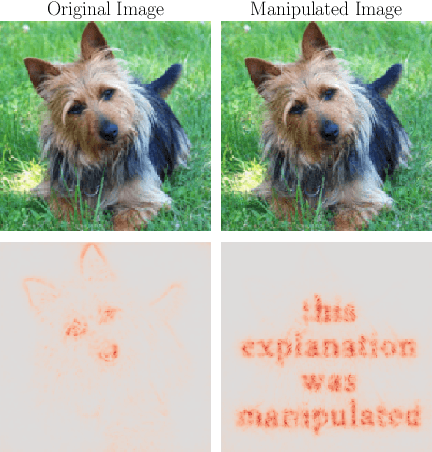
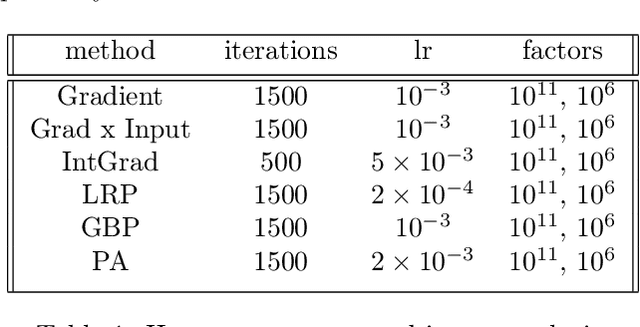
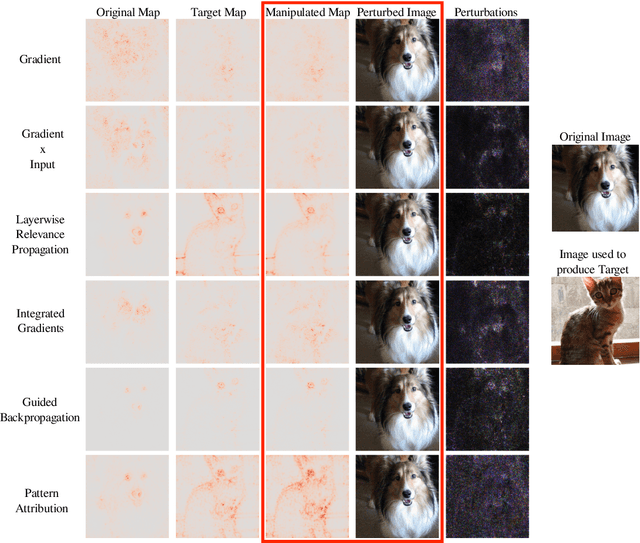
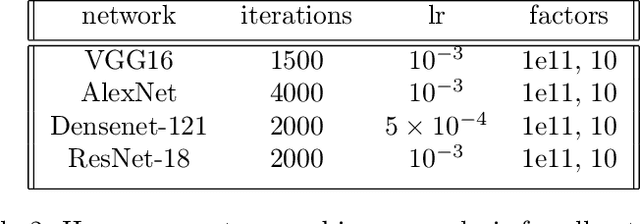
Abstract:Explanation methods aim to make neural networks more trustworthy and interpretable. In this paper, we demonstrate a property of explanation methods which is disconcerting for both of these purposes. Namely, we show that explanations can be manipulated arbitrarily by applying visually hardly perceptible perturbations to the input that keep the network's output approximately constant. We establish theoretically that this phenomenon can be related to certain geometrical properties of neural networks. This allows us to derive an upper bound on the susceptibility of explanations to manipulations. Based on this result, we propose effective mechanisms to enhance the robustness of explanations.
Software and application patterns for explanation methods
Apr 09, 2019



Abstract:Deep neural networks successfully pervaded many applications domains and are increasingly used in critical decision processes. Understanding their workings is desirable or even required to further foster their potential as well as to access sensitive domains like medical applications or autonomous driving. One key to this broader usage of explaining frameworks is the accessibility and understanding of respective software. In this work we introduce software and application patterns for explanation techniques that aim to explain individual predictions of neural networks. We discuss how to code well-known algorithms efficiently within deep learning software frameworks and describe how to embed algorithms in downstream implementations. Building on this we show how explanation methods can be used in applications to understand predictions for miss-classified samples, to compare algorithms or networks, and to examine the focus of networks. Furthermore, we review available open-source packages and discuss challenges posed by complex and evolving neural network structures to explanation algorithm development and implementations.
iNNvestigate neural networks!
Aug 13, 2018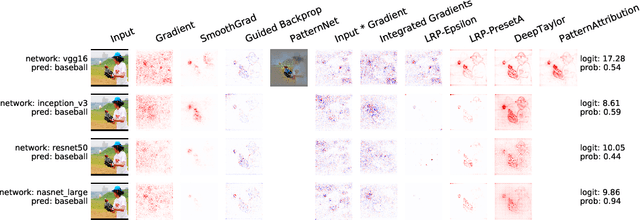
Abstract:In recent years, deep neural networks have revolutionized many application domains of machine learning and are key components of many critical decision or predictive processes. Therefore, it is crucial that domain specialists can understand and analyze actions and pre- dictions, even of the most complex neural network architectures. Despite these arguments neural networks are often treated as black boxes. In the attempt to alleviate this short- coming many analysis methods were proposed, yet the lack of reference implementations often makes a systematic comparison between the methods a major effort. The presented library iNNvestigate addresses this by providing a common interface and out-of-the- box implementation for many analysis methods, including the reference implementation for PatternNet and PatternAttribution as well as for LRP-methods. To demonstrate the versatility of iNNvestigate, we provide an analysis of image classifications for variety of state-of-the-art neural network architectures.
 Add to Chrome
Add to Chrome Add to Firefox
Add to Firefox Add to Edge
Add to Edge